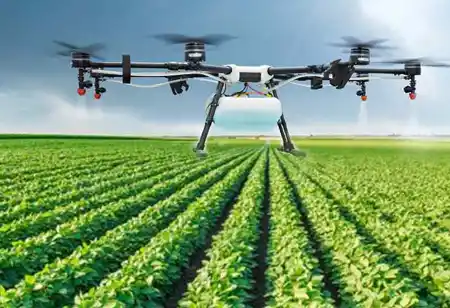Thank you for Subscribing to Agri Business Review Weekly Brief
Advanced Technologies in Aqua Farming
Advanced technologies in aqua farming are transforming the industry by improving efficiency, sustainability,

By
Agri Business Review | Tuesday, July 23, 2024
Stay ahead of the industry with exclusive feature stories on the top companies, expert insights and the latest news delivered straight to your inbox. Subscribe today.
Advanced technologies in aqua farming are transforming the industry by improving efficiency, sustainability, and productivity. These technologies enable precise management and higher yields, setting new standards for sustainable seafood production.
FREMONT, CA: The aqua farming industry is driven by innovations that significantly boost efficiency, sustainability, and productivity, including advanced monitoring systems, automated processing, sustainable farming practices, and advanced breeding techniques. This new era of technological integration is setting unique standards for the future of aquaculture, offering scalable solutions and fostering a more sustainable approach to seafood production by implementing these advanced technologies:
Automated Harvesting and Processing: This innovation leverages robotics and automation to optimise collection and processing. By automating grading, sorting, and packaging with high precision, processing boosts efficiency, reduces labour costs, and ensures consistent quality. Integrating these automated systems enables significant increases in throughput while upholding strict quality standards. This innovation supports scalability and enhances productivity, driving excellence and advancement within the aquaculture industry.
Recirculating Aquaculture Systems (RAS): The advanced closed-loop systems filter and reuse water within the aquaculture facility by reducing water consumption and waste, creating a controlled environment for fish farming. RAS improves efficiency by maintaining optimal water quality, allowing indoor and urban aquaculture, and providing flexibility in location by supporting sustainable practices by reducing the need for external water sources and discharge.
Vertical Aquaculture: Involves arranging multiple layers of fish tanks or growing units vertically to optimise space utilisation, especially in urban settings for high-density production within a limited footprint, enhancing productivity while minimising land use. By creating a controlled environment, vertical aquaculture boosts growth rates and resource efficiency with hydroponics or aquaponics systems to promote sustainability and resource recycling.
Offshore Aquaculture: The fish farming operations located in open ocean environments, away from coastal areas, reducing land use and alleviating pressure on near-shore ecosystems. Offshore farms benefit from more stable water conditions and reduced competition with other marine activities by using floating platforms and advanced technology to manage operations, reducing the environmental impact of traditional coastal fish farming.
Integrated Multi-Trophic Aquaculture (IMTA): IMTA cultivates multiple species from various trophic levels within a single environment by combining filter feeders, herbivores, and predators. This enhances nutrient recycling and boosts system efficiency. This approach reduces waste and increases aquaculture operations' sustainability while promoting biodiversity, creating a more balanced and resilient aquaculture system.
Aquaculture Technologies: Uses IoT sensors and advanced data analytics to monitor water quality, fish health, and environmental conditions. It enables precise control and informed decision-making. Automated adjustments ensure optimal conditions, which boost productivity and reduce labour. Early issue detection enhances efficiency, minimises waste, and supports sustainability, resulting in increased yields, improved fish welfare, and a reduced environmental footprint.
Genetic and Breeding Techniques: These techniques focus on improving growth rates, disease resistance, and adaptability to varying conditions with advanced methods, including genetic engineering and genomics, to accelerate improvements. By enhancing these qualities, breeders can develop and boost high-yielding strains to support production and meet market demands for higher-quality seafood.
Feed Optimisation and Alternatives: Improve nutrient utilisation, leading to better growth rates and feed conversion. Refine feed formulations to minimise waste, which helps maintain cleaner water and reduces environmental impact. High-quality feed supports fish health, reduces disease risks, and improves survival rates. Alternative ingredients like insect meal or algae promote sustainability by lowering costs and enhancing economic viability.
Technological innovations are redefining aqua farming by integrating this advancement to achieve higher yields, minimise environmental footprints, and meet the escalating demand for seafood responsibly and sustainably. As the industry develops, these innovations will become a planet-friendly future for seafood production, ultimately ensuring a healthier and more food-secure world.





